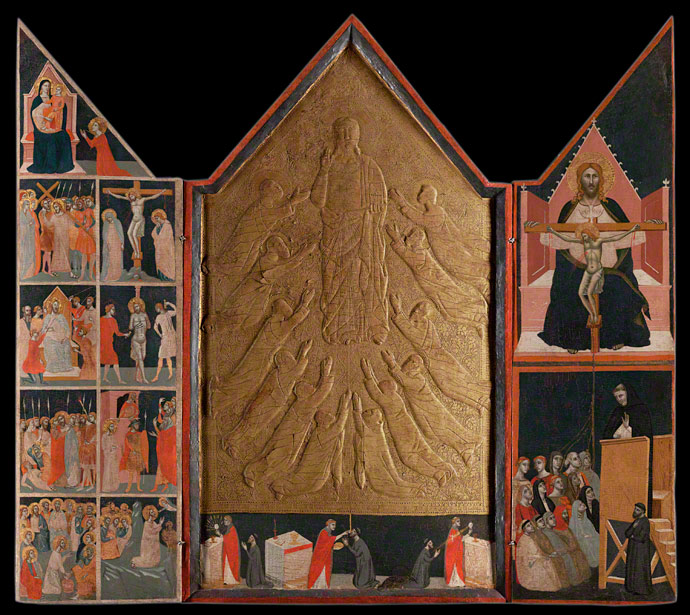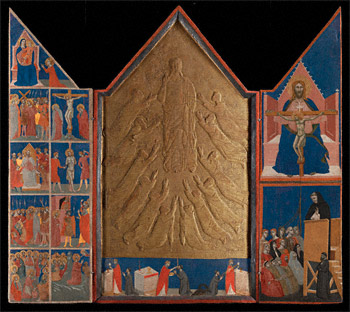Technical Studies
A portion of the exhibition presents some of the work and findings of a team of Getty conservators and conservation scientists who have examined panel paintings and illuminated manuscripts from the period in order to gather information about artistic techniques common in early 14th-century Florentine workshops. In addition, the appearance of many early panel paintings has changed over time due to environmental conditions and restorations, while manuscripts often maintain their original appearance. Thus, illuminations can provide important information missing from panel paintings and inform our understanding of the original splendor of these works.
Color Reconstruction of the Chiarito Tabernacle


Loading the video
Shifts in color, opacity, surface texture, and gloss are commonly observed in artworks over time. Some alterations are a result of the environment—light, temperature, humidity, and air pollution can all affect the look of an object. Others may result from the use of unstable materials or particular methods of application. When changes cannot be reversed, it is sometimes possible to create digital images that simulate an object's original appearance.
The Chiarito Tabernacle is an ideal candidate for digital color reconstruction: the blue background has darkened to almost black, the pink robes have faded, and in some yellow areas the pigment has almost completely fallen away. These pigments were identified using scientific analysis, and their original appearance in the Tabernacle was calculated using similar areas from better-preserved works as references. Other colors also may have changed, but since less information was available, they were not digitally "restored." Even this partial digital color reconstruction provides an informed visualization of how the painting would have originally appeared. Simulations such as this may provide new art historical perspectives, inform conservation treatment, and offer modern viewers an experience closer to that of the Florentines of the 14th century.
Publication
Florence at the Dawn of the Renaissance: Painting and Illumination 1300–1350
Edited by Christine Sciacca
Edited by Christine Sciacca
Related Information
At the Art Gallery of Ontario
- Revealing the Renaissance: Stories and Secrets in Early Florentine Art
March 16–June 16, 2013

